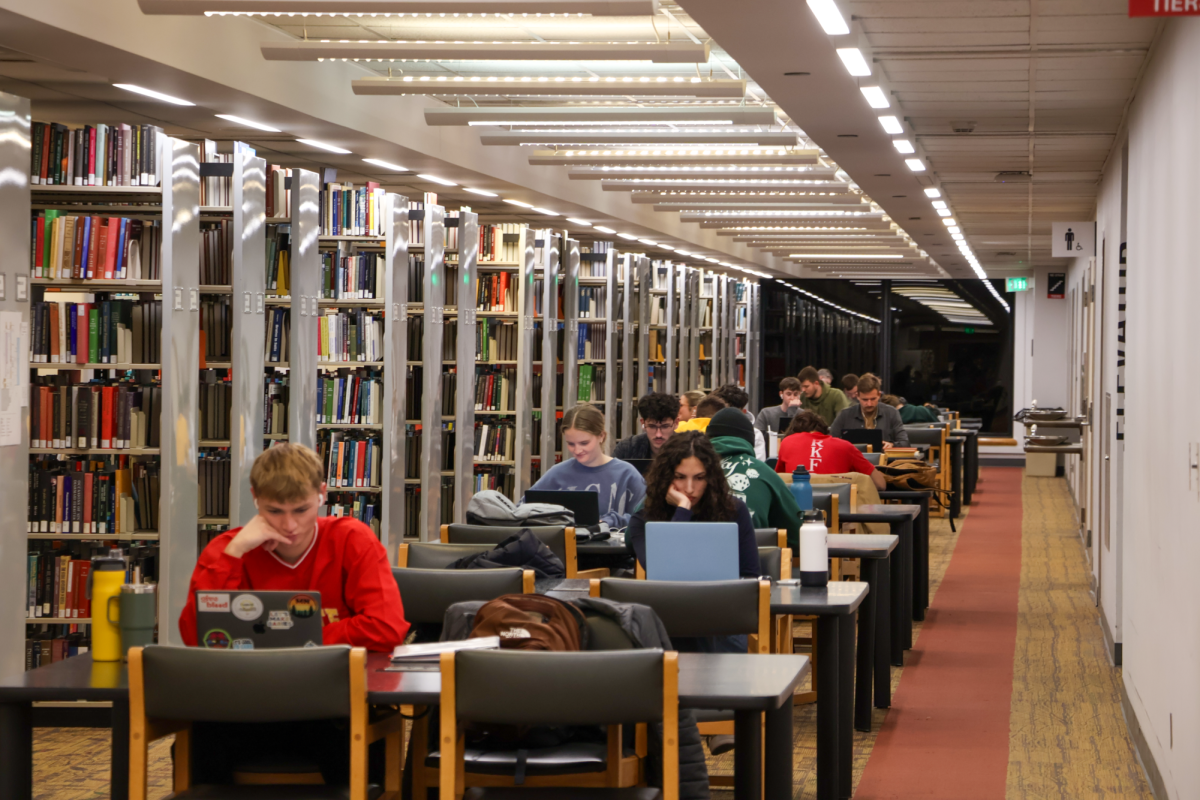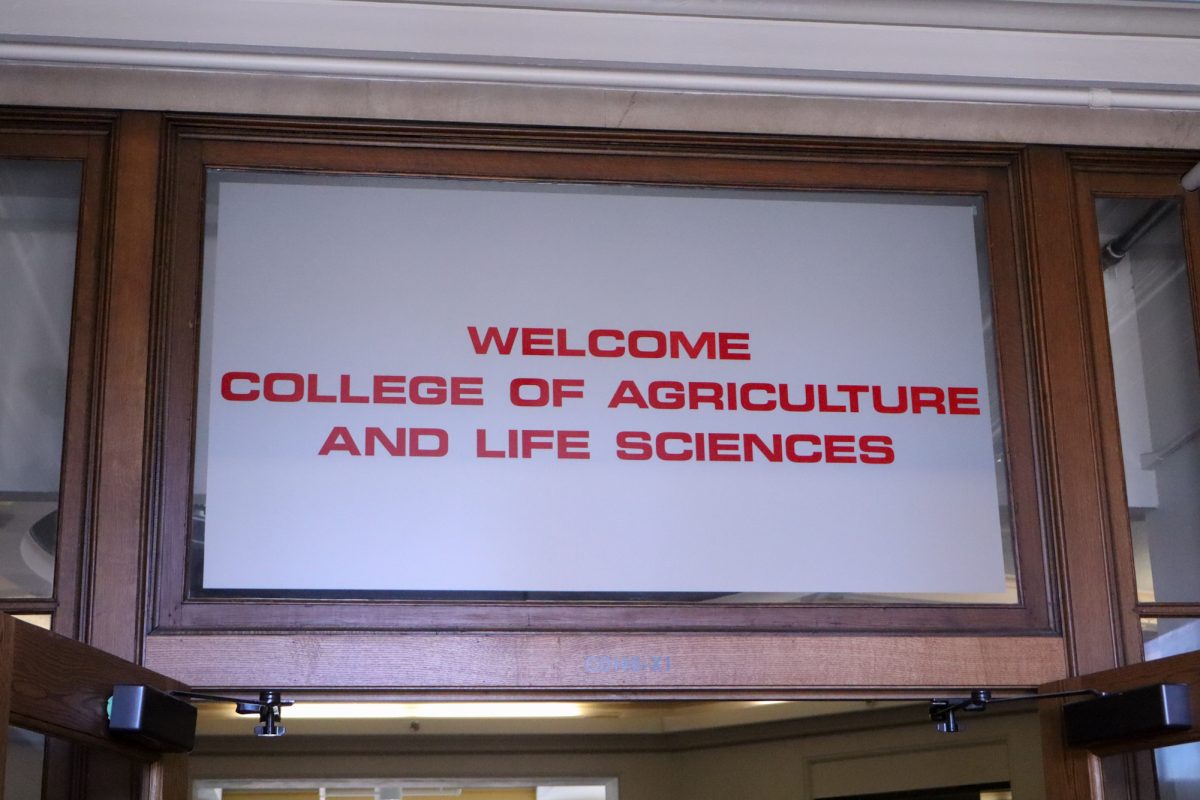Iowa State has plan in place to prevent shootings on university property
September 25, 2015
Breaking news: shooter on college campus.
Just those words flashing across the television screen is enough to strike terror into anyone. Particularly, when it’s close to home.
Like many universities in the United States, Iowa State has a plan in place to ensure if the worst does take place on campus, authorities are prepared to take necessary action to end the threat.
Between 2000 and 2013, 160 active-shooter incidents have taken place in the United States, according to a report released by the FBI. That’s roughly a shooting every four weeks.
An active-shooter incident is defined as a situation in which an individual or group of individuals is actively engaged in attempting to kill multiple people in a populated area. This excludes instances of domestic, gang or drug violence, as well as accidental events.
Examples of active-shooter situations include the shootings at Columbine High School, Sandy Hook Elementary School and the Aurora movie theater; 39 of these incidents took place in educational environments that ranged from K-12 to higher education facilities.
The most recent shooting this year happened at Delta State University in Cleveland, Miss., when Ethan Schmidt, professor of history, was shot in his office by Shannon Lamb.
In these situations, law enforcement officers make a point to be prepared, and the ISU Police Department is no exception.
If an active-shooter report is called in, nearby law enforcement would immediately spring into action.
Anthony Greiter, communications outreach officer with ISU Police, said they would not only dispatch officers immediately but also call in the Ames Police Department.
“We’ll want the people closest to us to know first,” he said. “We’ll need help from all over.”
Greiter said they’ll also call in officers from the Story County Sheriff’s Office, Iowa State Patrol and departments from nearby counties.
“Our job, regardless of our jurisdiction, is to take out the threat as soon as possible,” said Jason Tuttle, public information officer for the Ames Police Department. “That could mean two or three officers grabbing a shield or going in with a shotgun and trying to find that shooter and stop that threat, so he doesn’t hurt any more people.”
Tuttle said in active-shooter situations years ago like Columbine, police formed a perimeter around the area and waited for the SWAT team to arrive and handle the situation. They found that such a tactic only created a higher casualty number.
“[The shooter’s] whole goal is to have a high body count,” Tuttle said.
He said law enforcement officers are now trained to take out the threat as soon as possible.
As law enforcement is being called in, medical and fire assistance would arrive on the scene as well. University administration would also be notified as the campus is put on lockdown.
Greiter said they would notify campus as effectively and as quickly as possible. One option is a voice projection over the tornado sirens to warn students, as well as through ISU Alert and social media.
Greiter said Ames Police and ISU Police train together on a biannual basis for situations like this.
“We have pretty close training plans when it comes to how we respond because we know it will have to pull in a lot of resources very quickly,” Tuttle said. “We try to work together in training to know what to expect from one another.”
Since the increase in campus shootings, universities are taking extra precautions to protect students and teachers. Law enforcement officers are not the only people who learn how to handle situations like these; professors are as well.
“This wasn’t something I wasn’t thinking about when I started this journey a little over a decade ago,” Kyle Burgason, assistant professor of sociology, said about his education career. “You don’t think about your life being in danger at work.”
Iowa State has an option for students, faculty and staff to be prepared for situations like this through a specialized training offered by ISU Police.
The training, called Violence Incidents Response Training, is a free training course anyone can take. Greiter said it is meant to make people more mentally prepared to increase survival and recovery rates in these situations.
Essentially, the training teaches people to escape as quickly as possible and not to hide and wait for the attacker to find them. If escape is impossible, the training will teach participants that defending themselves is the best option.
“You don’t want to be an easy target,” Greiter said.
But the question remains: Why do some people engage in mass killings?
Burgason said there is no clear answer to that question.
“There’s never any easy answer,” Burgason said. “There’s nothing researchers can point to and say, ‘This is what makes a shooter.’ It’s just not that simple at all.”
In mass shootings, Burgason said there’s usually two basic fields of study: nature versus nurture. He said most will agree it’s a combination of both.
With nature, some people are born with abnormalities in the brain, specifically the pre-frontal cortex, which is responsible for regulating emotion and appropriate behavior.
“Studies have shown that in early childhood, as young as five, that the warning signs are there,” Burgason said. “Children with a more of an anti-social personality of increased violence, [researchers are] able to use that as better predictors of future delinquency.”
Studies have also shown that environment plays a part in forming a person’s genetic makeup. Burgason said that environment influences someone’s genes and the wiring of his or her brain.
But just like nature, the nurture aspect of development plays a major role in a person’s potential for violence.
“Some children who grow up in more loving and affectionate families, they’re less likely to be involved in forms of delinquency,” Burgason said.
Outside of nature versus nurture, other aspects can contribute to mass shooting incidents.
Burgason said factors may include violent video games and TV. He said there’s scientific research that states playing violent video games definitely contributes. While there is no causal link, high correlation does exist. But Burgason said correlation does not equal causation.
He also said the availability of guns could play a part.
“I do believe that it’s not the guns that kill people, it’s more of a tool,” Burgason said. “I’m not saying it doesn’t make it easier in some situations, especially with assault rifles and large clips the average joe can get their hands on that they really don’t need. However, a lot of people have guns and they’re not killers.”
Burgason said he wouldn’t identify gun culture as a specific cause, but it’s definitely part of the equation.
Burgason said some people can be motivated by revenge or by being shunned, like Eric Harris and Dylan Klebold in Columbine. He said everyone has their breaking point.
The most recent shooting at Delta State University appears to be different than other campus shootings because only one person was targeted.
It was also different for Burgason.
He knew both Lamb and Schmidt as acquaintances. He said those two and himself share mutual friends, who worked at Delta State University for some time together.
“You always hear about it, but to actually have met those people who were involved — it really brought it home and made it that much more frightening,” Burgason said.
The full FBI report can be found here.






